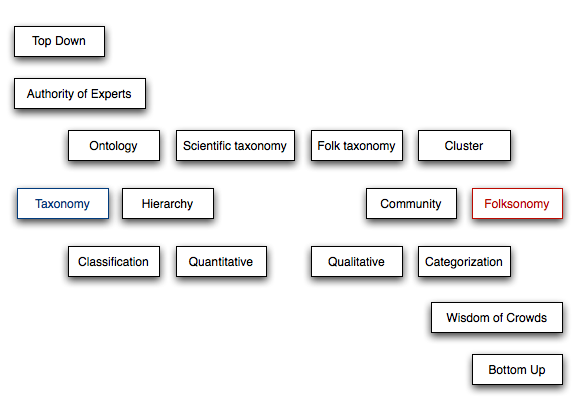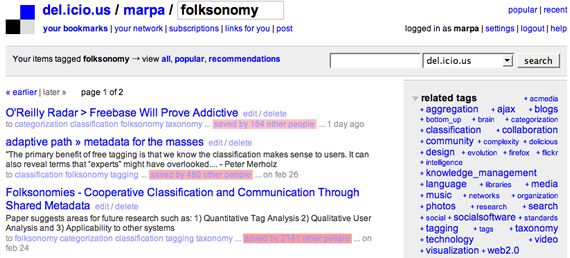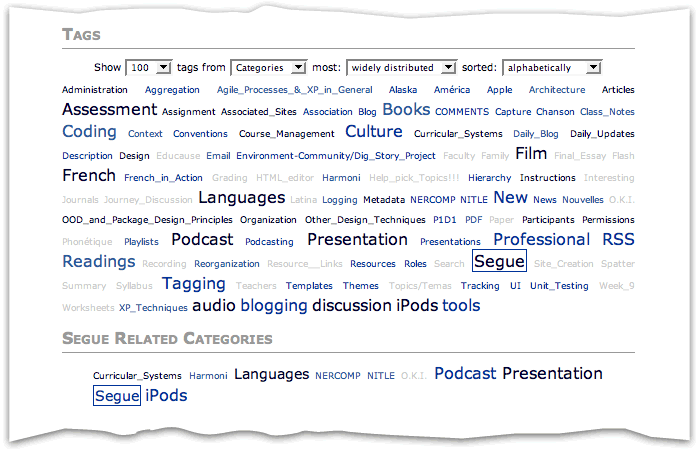A Guided Discussion
[audio:https://segueproject.org/etech/files/2007/03/Taxonomies%20vs.%20Folksonomies.mp3]
Taxonomies vs. Folksonomies: A Guided Discussion



Folksonomies, the collaborative categorization of knowledge by large diverse groups, can be more informed than formal taxonomies created by small groups of experts

- True hierarchies emerge from well-designed open networks that build-in incentives to participate
- True collaboration requires the transparent regulation of participation
- Organizations need to nurture the wisdom of crowds without encouraging mob rule.
- Digital objects, like ideas, need not occupy a single space
Organization Continuums

Untitled
From Taxonomies to Folksonomies: The Evolution of Organization

In this era of information abundance, formal taxonomies created by small groups of experts are being augmented by informal folksonomies that tap into the wisdom of crowds, blending and confounding critical and populist perspectives. This session explores collaborative categorization and ranking as tools for research, teaching, and learning.
Alex Chapin, Principal Curricular Technologist, Middlebury College
2006 Nercomp Annual Conference
News and Organization
Where do you get your news…?
| 1. web version of major newspapers? magazines? (e.g. New York Times, Chronicle of Higher Education) |
? |
| 2. online only publication? (e.g. Slate, First Monday) |
? |
| 3. Group blog? (e.g. Boing Boing, Engaget) |
? |
| 4. Collaborative Blog? (e.g. Slashdot) |
? |
| 5. Community-driven news ranking aggregator site? (e.g. Digg) |
? |
| 6. Robot-ranking news aggregator site? (e.g. Google News) | |
| 7. Collaborative community news voting and commentary aggregator site? (e.g. Newsvine) |
? |
Granularity and Syndication

RSS feeds in NetNewsWire
Tagging and Aggregation
Facets and Dynamic Lists
Clouds and Perspectives

Use Cases

Podcast (41:05)
[audio:https://segueproject.org/etech/files/2006/05/Evolution_of_Organization.mp3]
Here is the audio from my presentation at the 2006 Nercomp annual conference.



